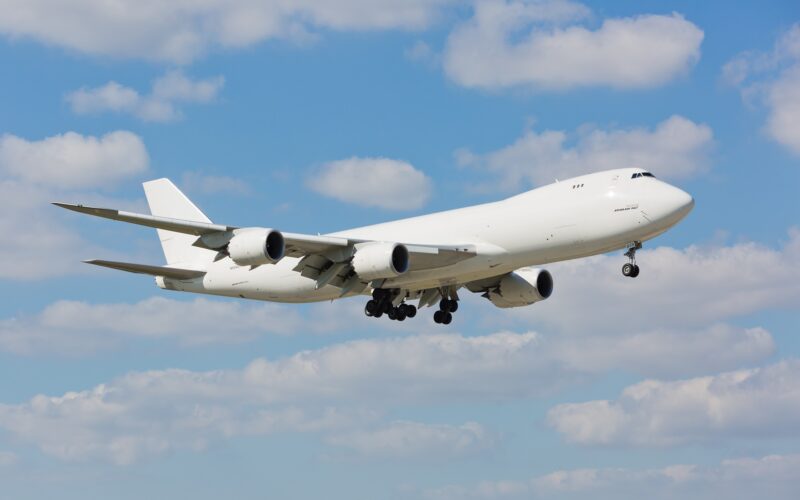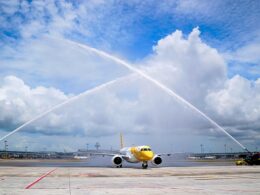Following inspections by Boeing plus reports received by the Federal Aviation Administration (FAA), the agency has issued an Airworthiness Directive (AD) for certain Boeing 747-400 and 747-8 aircraft that have an activated horizontal stabilizer fuel tank.
Operators reported ‘wear-through of the motor impeller inlet adapter of a transfer pump for the horizontal stabilizer fuel tank caused by contact between the pump inlet check valve and the inlet adapter’, which prompted the FAA to issue the AD. It affects 28 aircraft currently registered in the US.
Inspecting Boeing 747 tanks
According to the agency, airlines noted the issue after ‘troubleshooting of fuel imbalance issues involving the main wing fuel tanks, which utilize the same pump design as the horizontal stabilizer fuel tank’.
Subsequent investigations by Boeing resulted in the discovery of two fuel pumps that had sufficient wear on them to enable contact between the motor impeller inlet check valve flapper and the pump inducer. Further findings revealed 22 more worn pumps and ‘oscillations within the fuel flow around the pumps can cause the inlet check valve to vibrate as it is held spring-loaded against the inlet adapter of the pump,’ according to the FAA’s AD.
If the wear is undetected or not addressed, it could result in steel-on-steel contact. Since there is ‘a period of operation during each flight with a fueled horizontal stabilizer fuel tank where the pump will run dry for a short period before the flight crew is alerted to shut it down, or the pump is automatically shut off,’ explained the AD, ‘if the wear on the inlet adapter is severe enough, the steel-on-steel contact can cause a source of heat and/or sparking within the fuel tank’.
Ultimately, the heat and/or sparking, combined with flammable fuel vapors, ‘could result in a fuel tank explosion and consequent loss of the airplane,’ the FAA concluded.
Compliance with the AD
In order to comply with the directive, airlines will have to inspect the fuel pumps and report their results to the FAA.
According to estimates provided by the regulator, the inspections of the motor impeller inlet adapter and inlet check valve on the left and right transfer pumps will take 12 work-hours. With an estimated cost-per-hour of $85, the price to airlines to complete the inspection will be $1,020 per Boeing 747, with an additional hour to report findings to the FAA.
If operators have to replace the motor impeller inlet adapters, it will cost them $1,340 per aircraft, including labor ($340) and parts ($1,000), while the replacement of motor impeller inlet check valves will set them back $21,445 ($1,445 labor, $20,000 parts). Since the inlet check valves are not available as standalone parts, ‘this cost is for the pump housing, which contains the motor impeller inlet check valve’. The FAA noted that Boeing is currently working with its suppliers to make the motor impeller inlet check valve a standalone part.
The AD is effective January 13, 2023, and is a final rulemaking. Airlines have 90 days after the effective date to implement the corrective actions and report their findings to the FAA.
At the same time, the inspection reports required by the directive will help Boeing obtain more information about the issue, enabling the manufacturer and the agency to release a final action to address the unsafe conditions. The inspection reports could potentially help Boeing to address this problem in the main and center wing tanks, where the same pump design is used. Currently, the FAA has not discovered an unsafe condition of the pumps in the aforementioned fuel tanks.
READ MORE: FAA addresses unsafe Boeing 747 wing and landing gear condition









